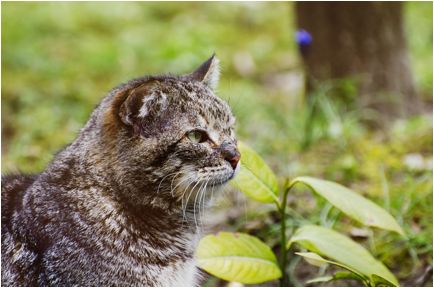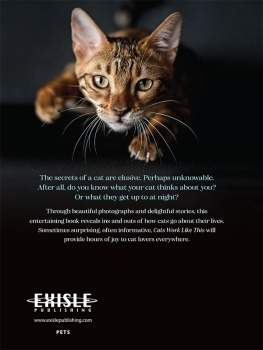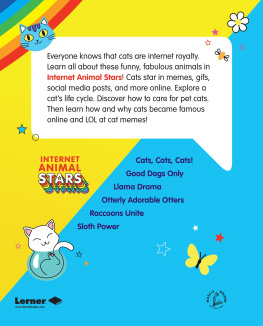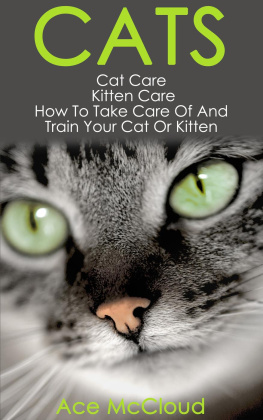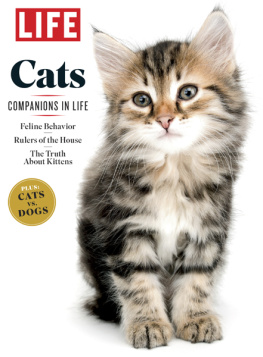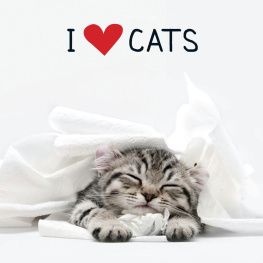How DoCats Communicate?
Cats communicate in many ways. They vocalize, use body language, takeaction, and release scents.
1. The Vocal Cat
Cats make three types of sounds.
A. Murmurs
- which includes purrs, trills, andchirrups
B. Meows
- which includes the basic meow,mews, and calls
C. AggressiveSounds
- which includes growls, snarls, hisses,yowls, shrieks, and spits.

Murmurs
Purring is an ongoing, gentle vibrating sound that indicatesa positive state in the cat. However, cats are also known to purr in stressful situations, like whenthey are seriously injured, in pain, sick or tense. It is believed cats purr when they arecontent, need a friend, or giving thanks for care, such as when vet treats aninjured or sick cat and gets a purr for it.
Kittens learn trilling from their mothers as she will use it to tell her babies to follow her. Adult cats trill in greeting, usually toanother feline. A trill sounds likea short purr and meow combined.
Chirrups are meows that roll off the tongue. Mother cats use chirrups to call heryoung from the nest. It is alsoused by friendly felines when approaching a human or another cat. Cats make excited chirrups and chatterswhen watching or stalking prey.
Meows
The most known sound cats make is the meow. Kitties meow mostly for humans and canbe plaintive, assertive, welcoming, bold, friendly, attention seeking,complaining or demanding. Sometimesthe meow is silent with the feline opening her mouth but nothing comes out.
Mews are soft, early sounds kittens make and are used to getmothers attention.
Calls are made by females in heat and are known ascaterwauling. Males as well makecalls when fighting, especially over females during mating.

Aggressive Sounds
Growling, hissing, snarling, and spitting are vocalizationscats make when in either defensive or offensive mode. These danger sounds are often combinedwith body posturing to affect a threat, for instance when a cat puffs up hisfur and hisses at a dog that gets too close. When growling, the puss is giving awarning of back off before you get the claws.
Cats hiss when angry, startled, afraid or hurt. A feline invading anothers territorywill get hissed and growled at, and if he doesnt leave, he may get attacked.
2. BodyLanguage
Cats use body language to express a wide range ofemotions. To communicate fear oraggression, the cat will arch her back, puff out her fur, and use a sidewaysposition. And to signal relaxation,the cats eyes will slowly blink or have his eyes half open.
This body language is communicated through the felinesfacial expressions, tail, body and coat posturing.
Posturing
When cats become aggressive, their back end goes up withstiffened hind legs, tail fur fluffed out, nose pointed forward, and ears flat. Such posture indicates danger, and thecat will attack. This form offeline communication is meant to frighten off an aggressor and prevent anattack. It is a warning.
A scared, defensive feline will make himself smaller, lowering his body to the ground while arching his back and leaningaway from the threat.
Cats can show comfort or trust when lying on their back and exposing the belly. However, this may also indicate the catis about to defend himself with sharp claws and teeth.
Playfulness is indicated with an open mouth with no teethexposed.

Ears
A cats ears can reveal various states of mind. With ears erect, the feline is focusedand alert. Relaxed ears show thecat is calm. Flattened ears happenwhen the feline is extremely aggressive or defensive.
Eyes
Staring communicates a threat or challenge and is anindicator of hierarchy with lower-ranking cats withdrawing from a stare down bya higher-ranking feline. This stareis used often for territory or predatory reasons.
Tail
A cats tail is a great communicator. For instance, a tail swinging fromside-to-side in a slow and lazy fashion shows the cat is relaxed. A twitching tail occurs in hunting orwhen the cat is irritated or displeased and can occur before an attack, playfulor otherwise.
When playing, kittens and younger cats will put the base oftheir tail up high and stiffen the tail except for an upside down u-shape,signaling excitement and even hyperactivity. This tail position can also be seen whenchasing other cats or running about by themselves.
Surprised or scared, a cat may erect the fur on its tail andback.
(Also see: How Do Cats Tails Work?)
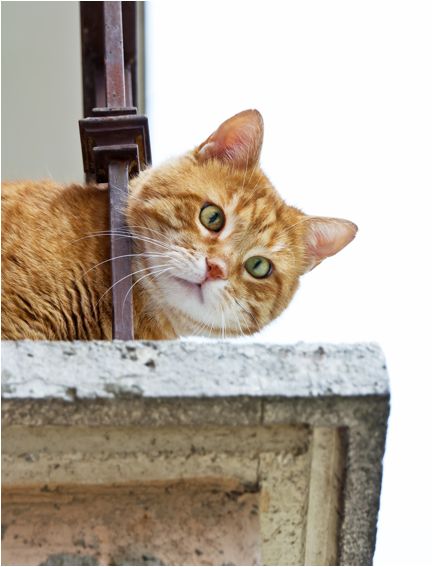
3. Physical
Grooming & OtherForms of Affection
Cats show affection with other cats and some humans by grooming,licking, and kneading. When afeline purrs and kneads at the same time, she is communicating affection andcontentment.
A friendly greeting between cats occurs when they touchnoses and sniff each other. Bumpingheads and cheek rubbing between kitties displays dominance toward a subordinatecat.
A friendly greeting with a human is shown by facerubbing. The feline pushes her faceinto the person relating affection. The head-bump is another way cats reveal positive feelings for ahuman. Leg rubbing is another formof affection.
As cats rub and push against another cat or a human, theyare spreading their scent, which is a form of marking territory.
(Also see: HowDo Cats Show Love?)
Biting
Strong biting accompanied by growling, hissing or posturingdisplays aggression. Light bitesshow playfulness and affection, especially when combined with purring andkneading.
Another way biting is used by cats to communicate is throughmating. The male will bite thescruff of the females neck, and she will get into the lordosis, revealing sheis ready to mate.
(Also see: HowDo Cats Mate?)
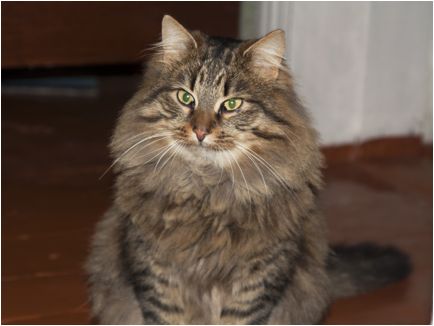
4. Smells
Cats use their own scent to communicate with other cats. By rubbing and head-bumping, kitties usescent glands in their face, tail, paws, and lower back to spread theirscent. As well, they use feces,urine, and spraying to leave a message to other cats.
Spraying marksthe cats territory, both indoors and out. Leaving urine and feces is also used to mark a cats domain. Additionally, rubbing their scent onobjects, like a fence post, marks territory.
Spraying males do the most frequent territory marking. Tomcats spray not only to mark theirdomain but also to let other toms know the females nearby are his for themating.
Tomcat spray is a strong smelling marker. Sometimes females will spray, too.
(Also see: HowDo Cats Spray?)
And thats how cats communicate.
